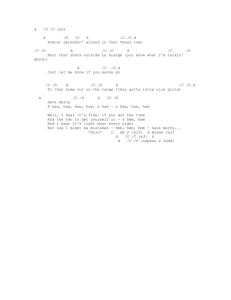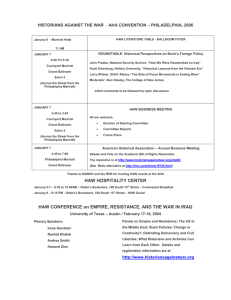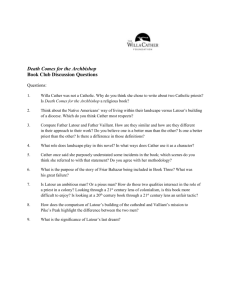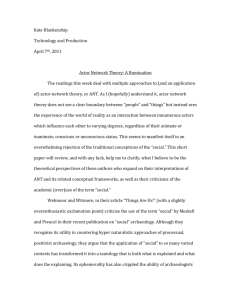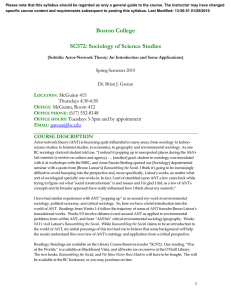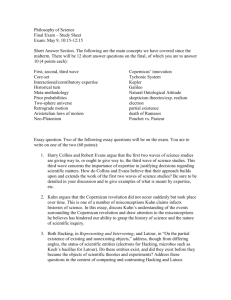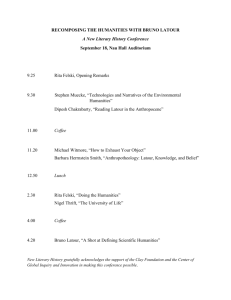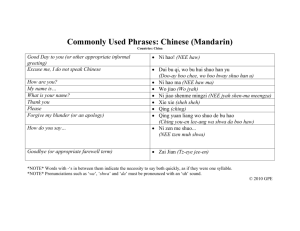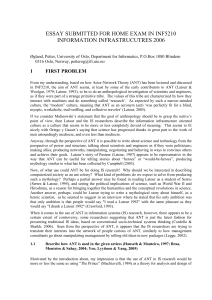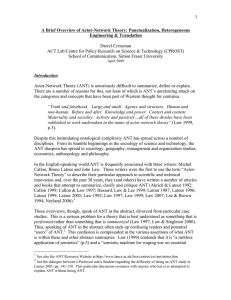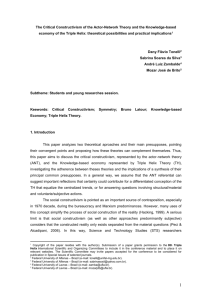Abstract - WordPress.com
advertisement
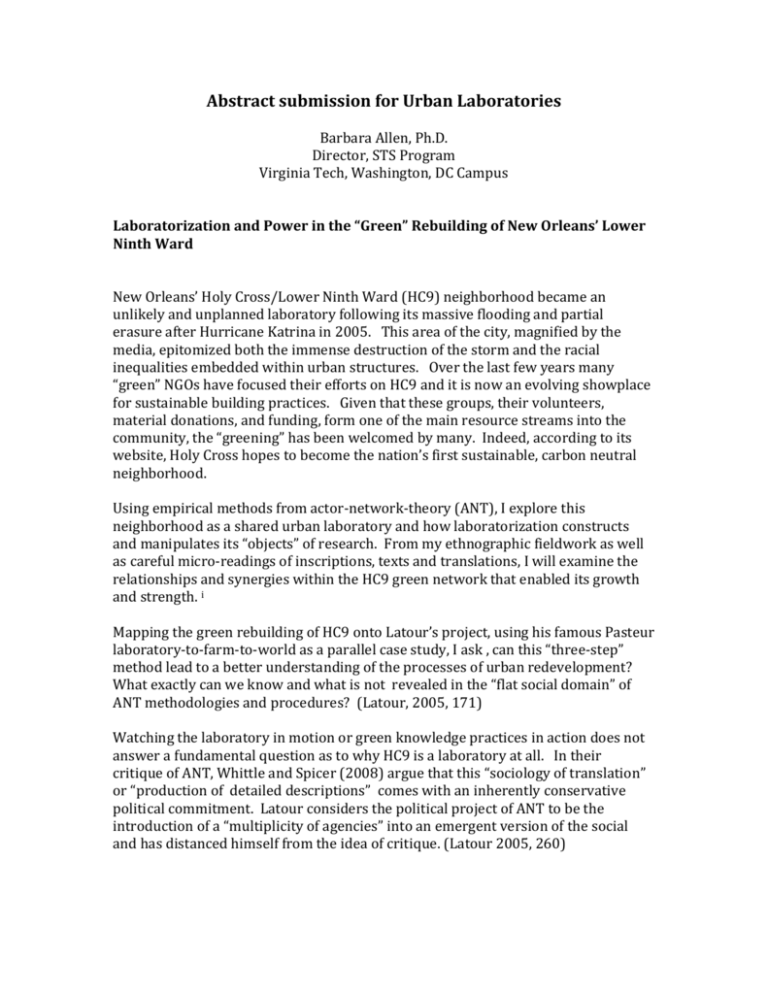
Abstract submission for Urban Laboratories Barbara Allen, Ph.D. Director, STS Program Virginia Tech, Washington, DC Campus Laboratorization and Power in the “Green” Rebuilding of New Orleans’ Lower Ninth Ward New Orleans’ Holy Cross/Lower Ninth Ward (HC9) neighborhood became an unlikely and unplanned laboratory following its massive flooding and partial erasure after Hurricane Katrina in 2005. This area of the city, magnified by the media, epitomized both the immense destruction of the storm and the racial inequalities embedded within urban structures. Over the last few years many “green” NGOs have focused their efforts on HC9 and it is now an evolving showplace for sustainable building practices. Given that these groups, their volunteers, material donations, and funding, form one of the main resource streams into the community, the “greening” has been welcomed by many. Indeed, according to its website, Holy Cross hopes to become the nation’s first sustainable, carbon neutral neighborhood. Using empirical methods from actor-network-theory (ANT), I explore this neighborhood as a shared urban laboratory and how laboratorization constructs and manipulates its “objects” of research. From my ethnographic fieldwork as well as careful micro-readings of inscriptions, texts and translations, I will examine the relationships and synergies within the HC9 green network that enabled its growth and strength. i Mapping the green rebuilding of HC9 onto Latour’s project, using his famous Pasteur laboratory-to-farm-to-world as a parallel case study, I ask , can this “three-step” method lead to a better understanding of the processes of urban redevelopment? What exactly can we know and what is not revealed in the “flat social domain” of ANT methodologies and procedures? (Latour, 2005, 171) Watching the laboratory in motion or green knowledge practices in action does not answer a fundamental question as to why HC9 is a laboratory at all. In their critique of ANT, Whittle and Spicer (2008) argue that this “sociology of translation” or “production of detailed descriptions” comes with an inherently conservative political commitment. Latour considers the political project of ANT to be the introduction of a “multiplicity of agencies” into an emergent version of the social and has distanced himself from the idea of critique. (Latour 2005, 260) In proposing a more robust analysis of urban laboratorization, I want to overlay ANT with another set of theory/method tools that will include historical perspectives and an understanding of the role that relative power plays in the “making” of a green HC9.ii These tools can be found within the New Political Sociology of Science (NPSS), which looks at a different kind of network. It examines the intersection of rules, meanings, organizations, and resource distributions that shape knowledge production systems with an eye towards power and inequality. To put it another way, NPSS analyzes networks as they condition the availability and distribution of power in the production and dissemination of knowledge. (Frickel and Moore 2006, 8 ) Descriptions of the actors and networks in the green laboratorization of HC9 provides an exceptionally complete catalogue of the situation at hand, but does not answer the question as to whether the community wanted to become a green lab at all (or was manipulated into being one). This kind of description also neglects to ask whether the making of facts and artifacts, will include, in a meaningful way, community voices, or better yet, privilege those voices. “Whose lab, whose knowledge?” never seems to arise from ANT-type laboratory studies alone. Additional theoretical lenses are needed for political refraction when questions of fairness, equality and justice within our urban domains are at stake. References Frickel, S. and Moore, K. (eds.) (2006). The New Political Sociology of Science: Institutions, Networks, and Power. Madison: University of Wisconsin Press. Latour, B. (2005). Reassembling the Social: An Introduction to Actor-Network Theory. Oxford: Oxford University Press. Whittle, A. and Spicer, A. (2008) “Is Actor Network Theory Critique?” Organization Studies 29: 611-629. While ANT is not the only laboratory studies method that gives descriptive accounts of fact-making, it is one of the most widely used. i It is important to note that there is also a second type of laboratory study in STS that is more anthropologically based examining the “play of power, identity and laboratory organization.” (see P. Doing in the STS Handbook (2008), 298). This is evidenced in the work of Traweek, Gusterson and others. ii

